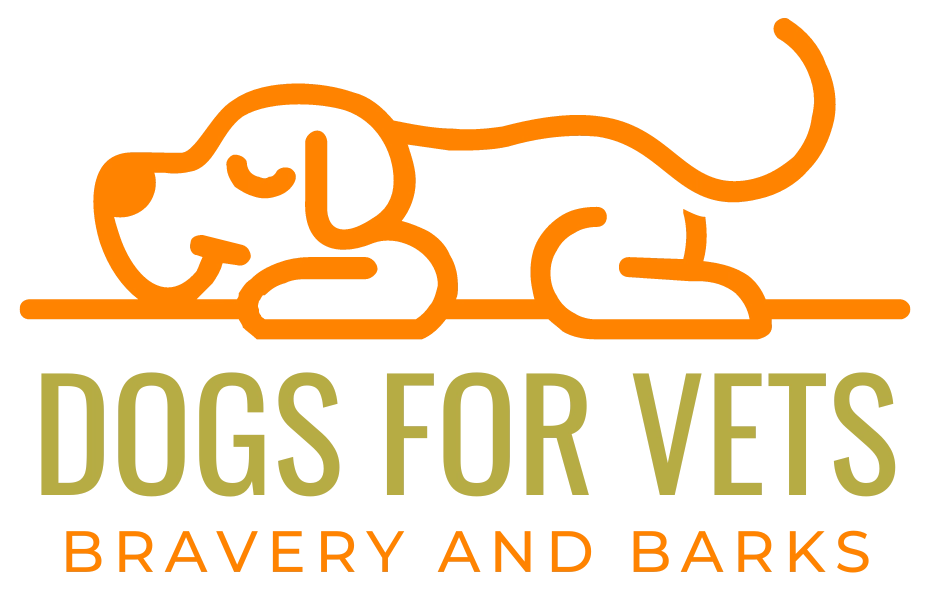This post may contain ads and affiliate links and we may earn a small commission when you click on the links at no additional cost to you. As an Amazon Affiliate, we earn from qualifying purchases. You can read our full disclaimer here.
How to Prepare Your Dog for a Vet Visit: Ensuring a Stress-Free Experience
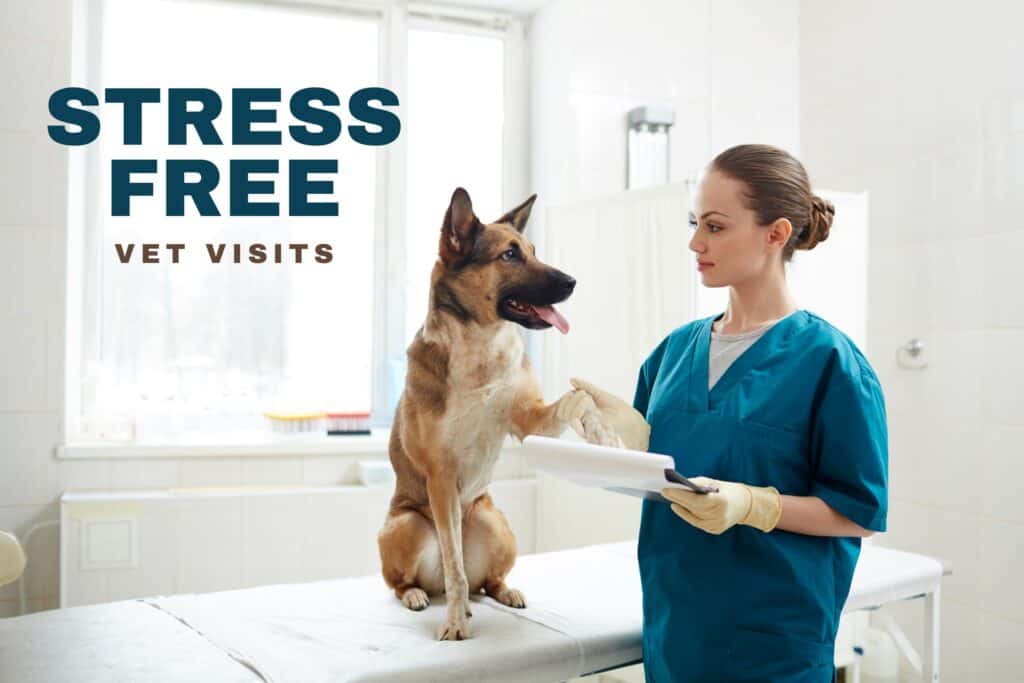
Knowing how to prepare your dog for a vet visit is vital for their well-being and your peace of mind.
Regular vet check-ups play a crucial role in maintaining your dog’s health, identifying potential issues early on, and are indispensable in emergencies.
To ensure these visits are as smooth and stress-free as possible, a little preparation goes a long way.
It can significantly reduce your dog’s anxiety, transforming the vet visit into a more positive experience for both of you.
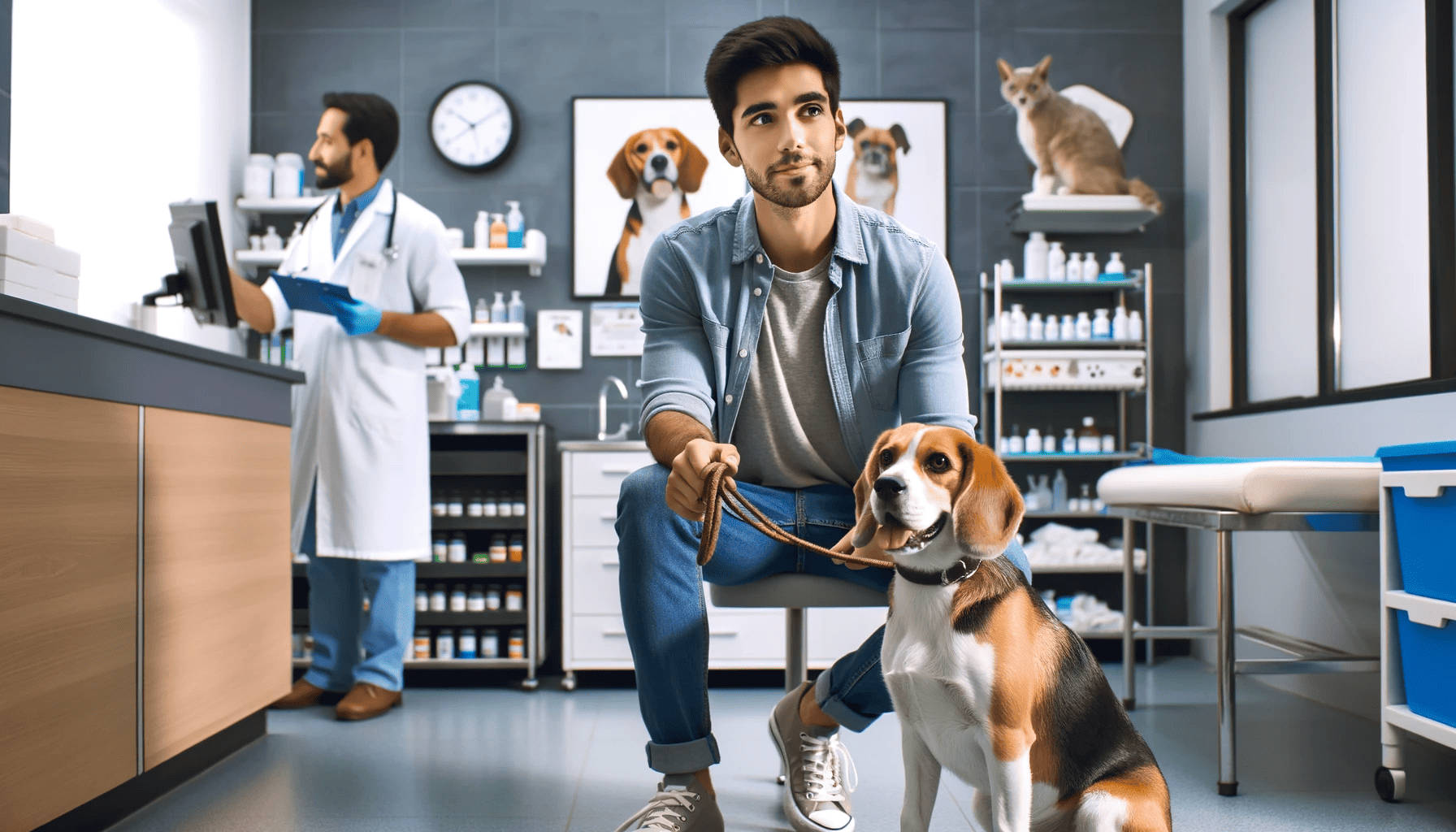
Preparing your dog behaviorally involves familiarizing them with the types of handling they might experience at the clinic. Training them to be comfortable with being touched on various parts of the body can reduce their stress during the actual examination.
Likewise, making sure you have everything needed for the vet visit, such as any required paperwork and a recent stool sample, will streamline the appointment.
Keeping your dog’s comfort and safety in mind throughout the visit is also crucial, and this includes the journey to and from the vet clinic.
Key Takeaways of How to Prepare Your Dog for a Vet Visit
- Regular vet visits are vital for your dog’s health.
- Behavioral preparation can ease vet visit stress.
- Ensuring logistical items are in order facilitates a smooth visit.
Understanding the Importance of Vet Visits
Vet visits play a crucial role in maintaining your dog’s health and catching any issues early on. They can be pivotal in ensuring a long, happy life for your pet.
Recognizing Signs of Anxiety and Stress in Dogs
When preparing for a vet visit, it’s essential to look out for signs that your dog might be feeling anxious or stressed. These can include excessive panting, drooling, trembling, or whining.
Some dogs may hide or display a decrease in activity. Recognizing these signs early can help you take steps to alleviate their stress before the appointment.
Benefits of Regular Veterinary Check-Ups
Regular check-ups are not just for when your dog appears unwell but are a preventative measure. They often include thorough exams that can detect health conditions that may not be visible to you.
Routine medical care, including vaccinations, can prevent various diseases. By maintaining a schedule of routine check-ups, you ensure your dog stays healthy and any treatment can be as effective as possible.
Regular visits also allow your veterinarian to track changes over time and provide the best advice tailored to your dog’s unique health needs.
Preparing Your Dog Behaviorally for the Vet Visit
Preparing your dog for a vet visit goes beyond the physical aspects; it’s crucial to ensure they are behaviorally ready.
This means they should respond to basic commands, be accustomed to being handled, and associate vet visits with positive experiences.
Basic Training Commands
Make sure your dog has a firm grasp of basic commands like “sit” and “stay.” These commands help keep your dog calm and stationary during examinations. Consistent training with treats or praise as a reward can reinforce these behaviors.
- Sit: Teach your dog to sit calmly, using a food reward to encourage them.
- Stay: Practice the stay command in various settings to generalize the behavior.
Desensitization to Being Handled
Touch is a significant part of vet visits. Gradually get your dog comfortable with being handled by touching different body parts, like ears and paws.
Reward them with their favorite treats or a toy to create a positive experience.
- Ears: Gently examine your dog’s ears, giving a treat for cooperation.
- Paws: Handle their paws frequently, rewarding with praise or a piece of food.
Practice Visits and Positive Reinforcement
Simulate aspects of a vet visit to make the real experience less daunting. Consider mock vet visits at home or short visits to the vet’s office that don’t involve examinations.
Use a leash, and give exercise before the visit to help your dog remain tranquil. Always associate vet visits with positive reinforcement, like treats or playtime, to build a constructive association.
- Mock Exam: Gently inspect your dog as a vet would, providing a reward for calm behavior.
- Leash Training: Practice walking on a leash to ensure your dog is comfortable being guided.
How to Prepare Your Dog for a Vet Visit: Physical Preparation for the Appointment
Before heading to the vet, it’s important to address your dog’s physical condition to ensure a seamless exam.
This preparation involves grooming and conducting a pre-visit health check, as well as making necessary fasting or diet adjustments.
Grooming and Pre-visit Health Checks
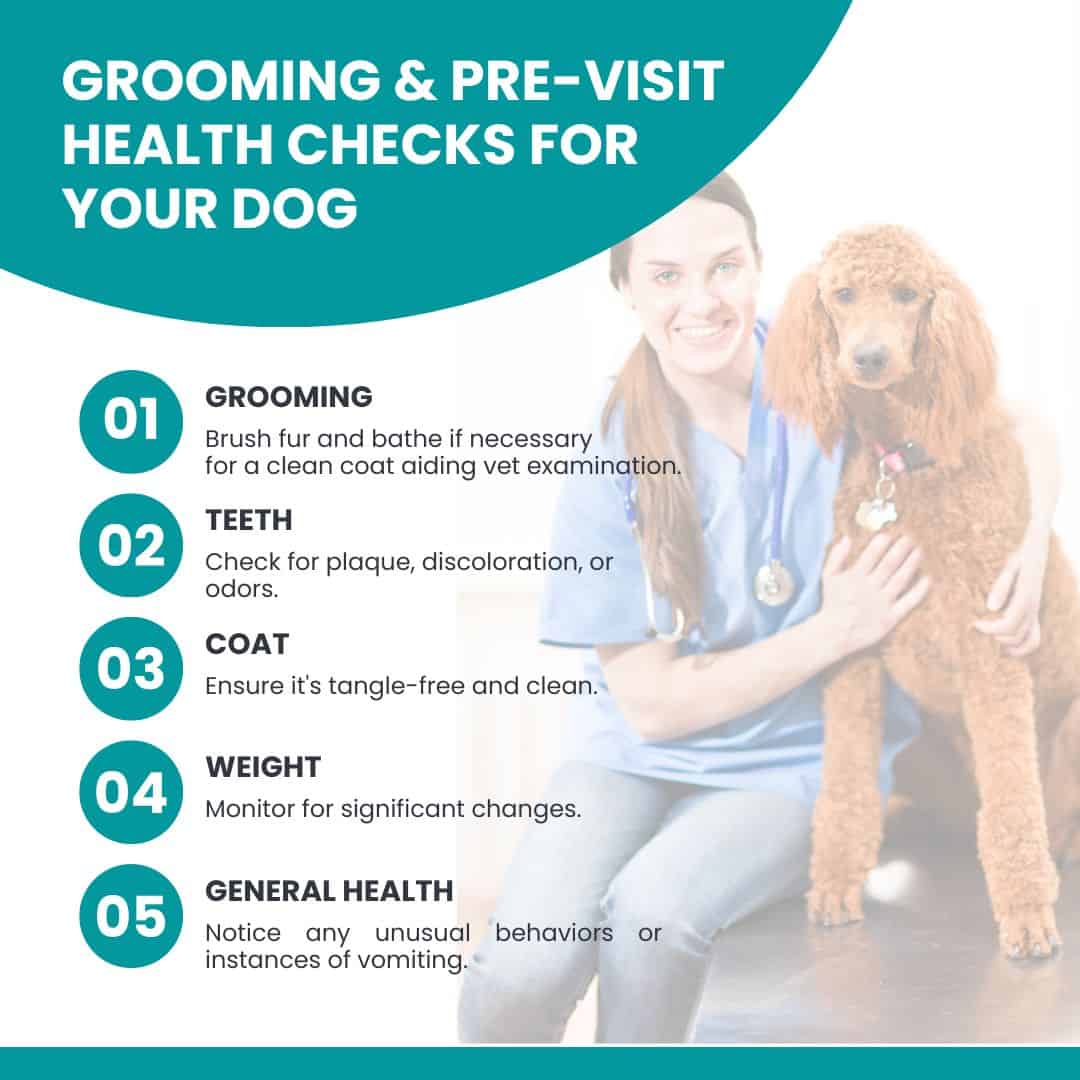
Thoroughly groom your dog prior to the appointment. This includes brushing their fur to remove any tangles and bathing them if necessary to ensure a clean coat, which will assist the vet during the physical examination.
Check their teeth for any signs of dental issues, and observe for any abnormal lumps or bumps on their skin. It’s also useful to note changes in your dog’s weight or any instances of vomiting, as these can be significant during the medical history review.
- Teeth: Check for plaque, discoloration, or smell.
- Coat: Brush and, if needed, bathe to remove debris.
- Weight: Monitor and record any significant changes.
- General Health: Note any vomiting or unusual behaviors.
Fasting or Diet Adjustments Prior to Visiting
Depending on the reason for your dog’s vet visit, you may need to adjust their diet. Some medical exams require fasting, so check with your clinic for specific instructions.
If your dog is undergoing a routine check-up, ensure they are fed their regular diet but be cautious not to feed them right before the visit to avoid stomach upset.
- Fasting: Confirm with the vet if required for the exam.
- Regular Diet: Maintain normal feeding routines unless instructed otherwise.
- Pre-Appointment Feeding: Avoid giving food immediately before the visit.
How to Prepare Your Dog for a Vet Visit: Logistical Aspects
Logistical preparation is crucial to ensure a smooth vet visit with your dog. Covering everything from scheduling to in-clinic procedures will help minimize stress for both you and your pet.
Scheduling and Documentation
Schedule your appointment at a time that works for you and minimizes wait time at the clinic. Call the receptionist early to find the most suitable slot and inquire about the paperwork needed.
Bring your dog’s medical records, including vaccination history and notes on any previous conditions. If your dog is on medications, have a list of them and their dosages ready.
Preparing for the Trip
If the vet clinic is not within walking distance, acclimate your dog to travel in a carrier or with a harness in your vehicle. Collect a stool sample if instructed by the vet and store it in a sealed plastic bag.
Ensure you have your dog’s leash and any calming aids if they tend to get anxious during travel.
In-Clinic Logistics
Upon arrival, check in with the receptionist and hand in any paperwork. Keep your dog on a leash and be mindful of other pets in the waiting area.
Follow instructions from the vet staff regarding where to wait and how to enter the examination room when it’s your turn.
How to Prepare Your Dog for a Vet Visit: Managing Your Dog’s Comfort and Safety
To ensure your dog’s vet visit is as stress-free as possible, focus on preparation regarding travel and waiting room strategies.
Choosing the Right Carrier or Restraint
Carrier: Select a pet carrier that’s well-ventilated, secure, and appropriately sized for your dog. A familiar scent can make the carrier more inviting, so place a favored blanket or toy inside. For larger dogs, a restraint that attaches to the car’s seatbelt system may be more practical.
How to prepare your pet for a low-stress vet visit suggests placing carriers and crates in the most stable part of the vehicle, like the far back.
Designed for safety and comfort, it features an interior tether and a removable, washable fleece pad. Ideal for small dogs and cats who deserve the best view on every journey!
Restraint: In case you use a restraint, ensure it allows for some movement but keeps your dog secure during sudden stops. Restraints should be comfortable to prevent any stressful impact on your dog’s well-being.
Whether you have a tiny terrier or a big boxer, the adjustable length (18-30 inches) ensures the perfect fit. Plus, its versatility allows for easy transformation into a traditional leash, making every trip with your pet hassle-free and safe.
Coping with Car Rides
In the lead-up to the vet appointment, take your dog on short car rides to build a sense of normalcy around travel.
During these rides, offer treats for calm behavior to associate positivity with the experience. If car rides tend to be anxious events for your dog, talk to your vet about medication or calming aids that can help alleviate stress without compromising safety.
The use of a familiar-smelling blanket in the car can also provide comfort.
Ensuring a Calm Waiting Room Experience
Upon arrival, maintain a calm demeanor to influence your dog’s behavior. Keep distance from other pets to minimize anxiety and stress.
If you know your dog becomes particularly anxious in the waiting room, ask if you can wait in the car until the vet is ready to see your dog. Bring along their favorite toy or treat to redirect attention from the unfamiliar environment.
How to Prepare Your Dog for a Vet Visit: Post-Visit Care and Follow-Up
After your dog’s vet appointment, effective post-visit care is crucial to their recovery and health. Specific guidelines and treatments prescribed by the vet must be followed diligently.
Reviewing Post-Exam Guidelines and Treatments
Your vet will provide post-exam guidelines specific to your dog’s health condition, which may include administering medications or monitoring for any signs of health problems.
Review the vet’s instructions carefully, ensuring that any prescribed medications are given at the correct dosages and times.
If vaccines or deworming treatments were administered during the appointment, note any potential side effects and follow any dietary recommendations.
Scheduling Follow-Up Appointments or Treatments
It’s important to schedule any follow-up appointments to re-evaluate your dog’s progress or complete additional treatments. If a health condition was identified, timely follow-ups can be critical.
Keep a calendar for your dog’s routine check-ups to stay proactive about their health.
Remember that some conditions may require ongoing management, making regular vet visits a key part of ensuring long-term well-being.
Special Considerations for Different Dogs
When preparing for a vet visit, it’s essential to consider the specific needs of different dogs, such as puppies, senior dogs, and how to manage vet visits for multiple pets.
Puppies and Their Specific Needs

Puppies require special attention for vet visits. They need a positive introduction to the vet to set the tone for future visits.
Ensure your puppy is up-to-date with their vaccinations before going to places with other dogs, like a dog park.
Start by getting them used to being handled; touch their ears, paws, and mouth gently as part of their routine.
- Nutrition and Appetite: Keep an eye on your puppy’s appetite and discuss nutrition needs with your vet.
- Weight Monitoring: Regular weigh-ins are crucial. Get your puppy comfortable with being on a scale.
Senior Dogs and Chronic Conditions
Your senior dog may face chronic conditions or a diminished appetite. Be aware of any weight changes or signs of disease and be ready to discuss these with the vet.
Routine check-ups become increasingly important to monitor your senior dog’s wellness.
- Disease Management: Have a list of medications and treatments your dog is receiving.
- Comfort: Ensure your senior dog is comfortable during transport and waiting at the clinic.
Working with Multi-Pet Households
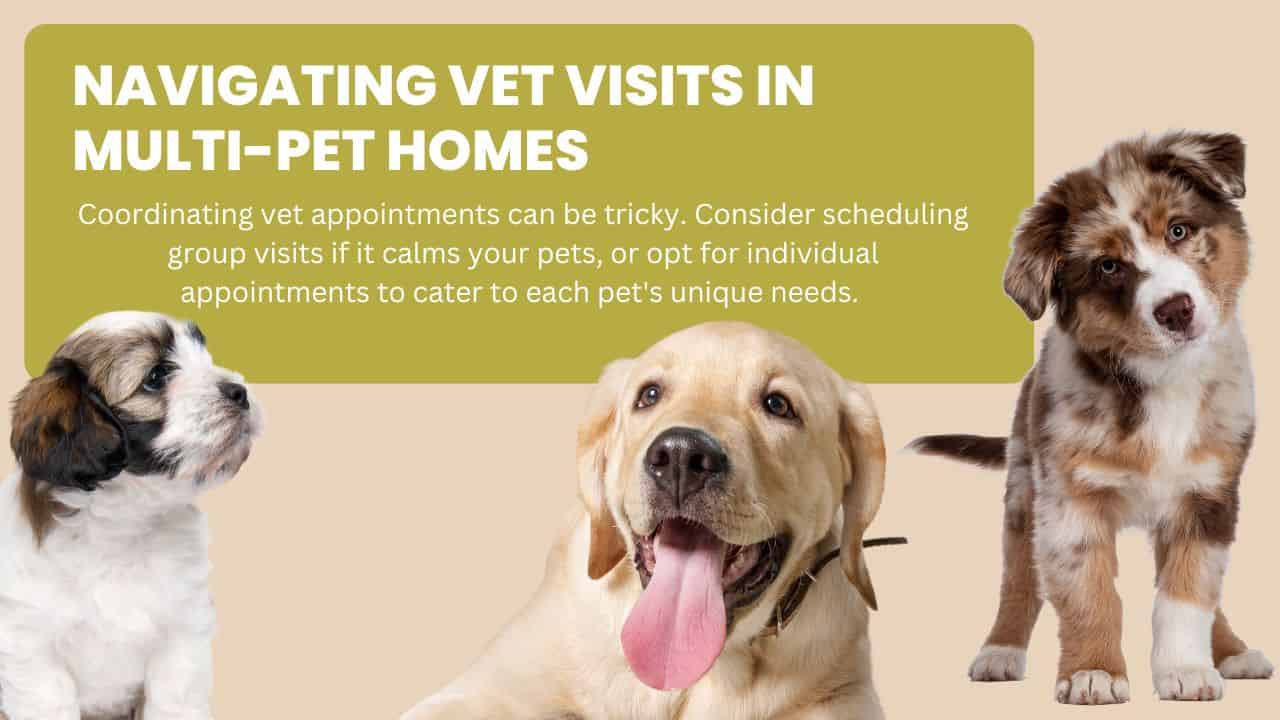
In multi-pet households, managing vet visits can be complex. Schedule appointments together if it reduces stress, or individually if your pets have different needs.
- Stress Reduction: Familiarize all pets with carriers and ensure each animal is handled calmly to minimize stress.
- Pet’s Health Records: Keep accurate records of each pet’s health for efficient vet visits.
Prioritize the health and comfort of your dogs, adjusting your preparations based on their age, health, and household dynamics.
Frequently Asked Questions about How to Prepare Your Dog for a Vet Visit
Preparing your dog for a vet visit involves understanding what steps to take before the appointment, ways to reduce stress, and knowing what you can expect in terms of procedures and costs.
What steps should I take to get my puppy ready for its first check-up and vaccinations?
For a puppy’s first vet visit, schedule an appointment and bring any medical records. On the day, ensure a comfortable carrier or leash and arrive early to help your puppy acclimatize.
How can I calm my dog before and during a visit to the vet to ease anxiety?
To soothe your dog, engage in calming activities, like a walk, before the appointment. Use a reassuring voice and bring familiar items like toys or blankets. Positive reinforcement can also be beneficial.
What is the typical cost for a dog’s vet check-up without any pet insurance?
The cost varies by location, clinic, and required services, but a typical vet check-up can range anywhere from $50 to $250. Always check with your local vet for accurate pricing.
Is it necessary to bathe my dog before a visit to the vet clinic?
You don’t need to bathe your dog before a vet appointment unless it is specifically requested, or if your dog is particularly dirty, which could potentially contaminate the clinic.
What should I do if my dog is reactive or won’t allow the vet to examine them?
If your dog is reactive, inform the vet staff ahead of time. Training and desensitization can help over time. It may be necessary to muzzle your dog for safety, or the vet could recommend sedation.
Is it advisable to feed my dog before taking them to the vet, or should they have an empty stomach?
If tests or surgery could be needed, your vet may instruct you to fast your dog. Otherwise, a light meal can help keep them comfortable but avoid feeding right before the appointment to prevent an upset stomach.
Tail End Tips: Wrapping Up How to Prepare Your Dog for a Vet Visit
In conclusion, how to prepare your dog for a vet visit doesn’t have to be a tail-twister. With these simple yet effective tips, you can turn vet visits from a dreaded chore into a smooth, stress-free experience for both you and your furry friend.
Remember, it’s all about familiarity, comfort, and positive associations. So, take a little time to practice and prepare, and watch as your pooch becomes a vet-visit pro! Safe travels and happy tails!
-

Coffee Mug – In Dog Coffees I’ve Only Had One
$11.95 – $14.95 Select options This product has multiple variants. The options may be chosen on the product page
